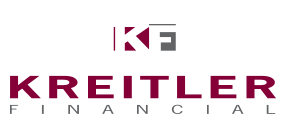After years of dedication and hard work, retirement almost seems like a well-deserved vacation. It’s a chance to trade in the daily grind for activities that truly ignite your passions.
But that won’t be possible without a steady source of income. Even in your retirement days, you will have to pay the bills to keep living your life comfortably.
As you seek to consolidate your retirement income sources, our team of experienced financial advisors at Kreitler Financial is here to guide you every step of the way!
Don’t leave your retirement income to chance – let us help you optimize your income sources and create a personalized plan tailored to your goals and needs.
In this article, we will discuss three primary sources of retirement income.
The Primary Sources of Retirement Income
Most retirees rely on social security, pensions, and investments to cover their living expenses. Let’s take a closer, more comprehensive look at each of these essential sources:
- Social Security
Almost 68 million U.S. citizens will receive Social Security paychecks from the federal government in 2024. Social security is a cornerstone of retirement income for many Americans. One of its strengths is its secure funding structure.
The program primarily relies on payroll taxes, making up around 89% of the Social Security funding. This means that as long as there’s a healthy workforce, Social Security will provide a steady stream of income to support beneficiaries.
When planning your retirement, you can confidently factor in Social Security as a reliable source of income.
Social security plays a vital role in most American retirements. The amount you receive depends on your lifetime earnings, adjusted for inflation. The program considers your highest 35 years of earnings to calculate your benefits.
The good news is that you don’t have to wait until retirement to start planning your Social Security strategy. The Social Security Administration website allows you to create a “My Social Security” account. This free tool lets you:
- Review your earnings history: Ensure your earnings are accurately recorded for a more precise benefit estimate.
- Estimate your future benefits: Get a personalized idea of what you might receive when you retire.
- Pensions
Securing a comfortable retirement is a top priority for many. For some fortunate employees, a pension plan sponsored by their employer can solve a significant piece of that puzzle.
A pension is a retirement plan designed to offer monthly income once you retire from your position. Employers are obligated to contribute to a fund pool invested for the employees’ benefit, while employees may also choose to contribute a portion of their wages to the plan.
However, not all businesses provide these plans; they are most commonly found in government organizations and large corporations.
Pension plans aren’t without safeguards. The U.S. Department of Labor establishes rules to ensure companies contribute enough to employee retirement funds. These regulations help maintain the health and stability of the plan.
Another key concept to understand is “vesting.” This refers to your right to receive the benefits accrued in your pension plan. There are two main vesting schedules:
● Cliff Vesting: You don’t own any of the contributions made by your employer until you reach a specific number of years of service (often five years). Once you hit that cliff, you become fully vested and entitled to all your accrued benefits.
● Graded Vesting: You gradually earn ownership over your pension benefits with each year of service. For example, you might be 20% vested after two years and 100% vested after six years.
Understanding vesting is crucial, especially if you’re considering leaving a job before reaching full entitlement to your pension benefits. An experienced financial advisor can help you in that regard.
- Investments
Investment is another powerful strategy for maintaining a healthy cash flow during your retirement years. You can consider investing in –
- An investment portfolio designed to provide sustainable withdrawals:
This may include a balance of:
- Diverse Bond Portfolios:
For many retirees, fixed-income investments like bonds haven’t been very exciting lately. However, with the Federal Reserve raising short-term interest rates, bond yields are finally increasing, making them a more competitive option again.
- Income Generating Equities:
Investing in stocks is often associated with long-term growth, but some stocks can also provide income in the form of dividends. These are essentially cash payouts a company distributes to its shareholders from its profits.
Here’s the key thing to remember: not all companies offer dividends. However, for those that do, the payout amount can vary significantly.
Some companies prioritize consistent dividend payments, making them attractive for investors seeking regular income.
- Income Annuities:
An income annuity can be a powerful tool for retirement planning. It’s essentially an agreement with an insurance company. You provide them with a lump sum of money upfront or contribute smaller amounts over time.
In return, the insurance company guarantees you a steady stream of income payments for a set period or even your entire lifetime.
Work with Us
Exploring your retirement income options can be pretty complicated. The information in this article provides a solid foundation, but navigating the right path for your unique needs requires a personalized approach. This is where Kreitler Financial can be your strongest asset.
So set up an appointment, and let us craft the perfect retirement income plans for you.

